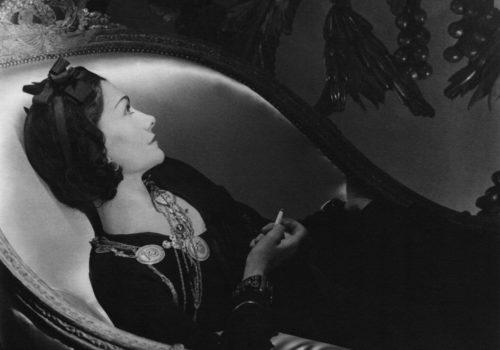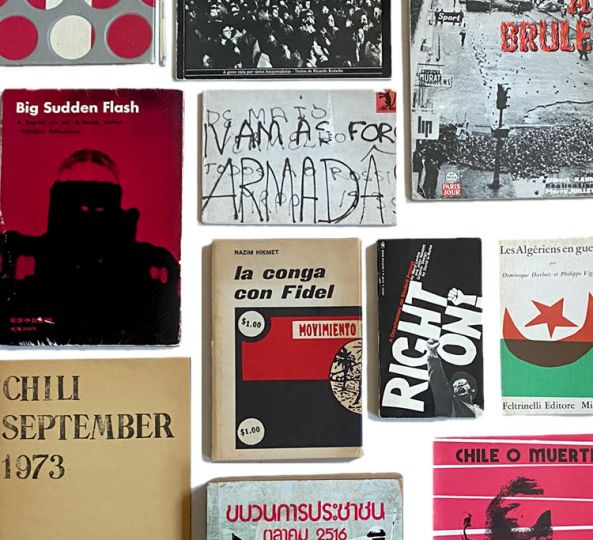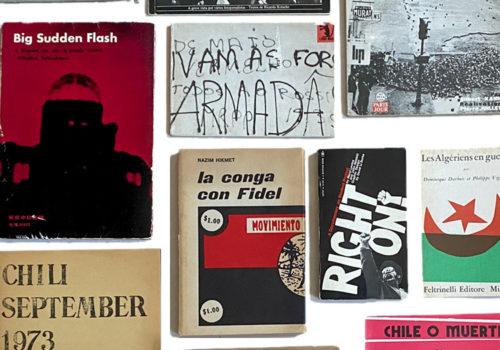Horst P. Horst, the German born American photographer is regarded as the ultimate master of elegance and sophistication in photographic history. His images have not only shaped the photographic language since the beginning of the 20th century, but also his work presents a mastery in the formal qualities of photography while perfectly blending the boundaries of fashion, art and commerce. A true master of light and composition, he seamlessly combined fashion photography with art and high society throughout an illustrious career that spanned six decades, and his oeuvre remains one of the most referenced today.
FROM HAMBURG TO PARIS
Horst P. Horst was born in 1906 in Hamburg originally as Horst Albert Bohrmann. During the late 1920s, he studied architecture at the Hamburg Kunstgewerbeschule, later leaving for Paris to study under famed architect Le Corbusier. While in Paris, Horst befriended star Vogue photographer, Baron George Hoyningen-Huene, and became his photographic assistant, occasional model, and lover.
EN VOGUE
Hoyningen-Huene introduced Horst to the creative world, as well as fashion photography during the 1930s. His association with French Vogue, however, began in 1931 where a full page ad showing a model in black velvet holding a Klytia scent bottle in one hand ran in the magazine. His breakthrough came in 1932, when he had his first exhibition at La Plume D’Or in Paris, and British Vogue showed three of his fashion studies in its March 1932 issue. Horst then briefly moved to New York for American Vogue, but differences in opinion with the magazine’s publisher caused him to return to Europe. When Hoyningen-Huene left Vogue for Harper’s Bazaar in 1935, Horst took over and became the chief photographer at French Vogue. On the eve of the WWII, in August 1939, he fled Paris to New York, where he began creating images for Vogue US and Vanity Fair where he worked until the early 80s, with a short interruption for army service between 1942-1945.
DEEP ATMOSPHERIC SHADOWS
Stylistically, deep atmospheric shadows were a hallmark of Horst’s fashion photography and portraiture. He avoided lighting images from above, and instead chose to highlight certain specific features within the frame with spotlights off to the side or beneath the subject. This not only created a sense of drama and mystery, but also revealed his interest and appreciation towards art history. His two photographs, Alix Gown, 1938, and, Helen Benett (Cape Dress), 1936, for example, present two models in the very center of the frame, with statuesque poses that reference an idealized norm of beauty of classical antiquity. The models’ association with classicism is further heightened by the gown, giving the appearance of marble. The meticulously controlled shadows beautifully define bodily features and give the pictures their timeless elegance.
A MASTERY IN LINE AND FORM
Horst P. Horst’s exquisite studies of the nude further displayed his mastery in line and form. Male Nude I, dated 1952, is part of a series of photographs he produced during the 1950s, and displays a young man leaning backwards with arms above his head. His one raised knee becomes the central focus of the image, both disguising and drawing attention to his groin area. Horst once again uses a focused form of lighting to create areas of highlight and deep shadow, and invites the viewer to appreciate the beauty of the human form. His minimalistic vision comes across through the creation of clear, simplified yet elegant lines created by the human body. Skin becomes as smooth as marble, likening the picture to paintings or classical nude sculptures.
Mehemed Agha, the celebrated art director of American Vogue further elaborated on Horst’s nudes saying: “[He} takes the inert clay of human flesh and models it into the decorative shapes of his own devising. Every gesture of his models is planned, every line controlled and coordinated to the whole of the picture.”
Taking as long as two days to set up light, his style gave a certain chiaroscuro effect especially to his series of exquisite nude studies.
MAINBOCHER CORSET
Perhaps one of Horst’s most celebrated and iconic photographs is the Mainbocher Corset, which he took in 1939. In fact, the picture carries a historical resonance as it was the last photograph he took in Paris before he fled due to war. He would later say: “While I was taking it, I was thinking of all that I am leaving behind.”
The image depicts model Madame Bernon wearing a back lacing corset of pink satin from the little known designer. The photograph exemplifies sexuality and eroticism with the corset worn over bare skin, which, at the time, would not have been the case in terms of normal wear. The way the corset opens around the bust creates sensuality making the image even more provocative. The form of the model’s body creates an s-shaped curve, a criteria that was often taken into consideration for universal beauty, alluding to the Greek norms of beauty. We are unable to see the model’s facial expression, further likening the figure to classical statue’s idealized form and other historical nudes.
FROM CLASSICISM TO SURREALISM
Although Horst had great appreciation for classicism, the Surrealist movement had a great impact on his work as well. His interest towards surrealism was in part inspired by his early, personal connections in Paris with the likes of Salvador Dali and Man Ray, and fashion designer Elsa Schiaparelli. Although these were mostly social connections, Horst collaborated professionally with Dali, photographing his costumes for the ballet, Bacchanale in 1939, as well as capturing a few iconic portraits of Dali and Schiaparelli themselves. His use of surrealist imagery and his enthusiasm for collaborating with surrealist artists were often seen in his photographic series from early on.
ELECTRIC BEAUTY
During the 30s and 40s, Horst incorporated fantasy backdrops, out of place objects, eroticized and disembodied bodily forms into his photographs which created a further whimsical, mysterious aura combined with his classical aesthetic. Electric Beauty, one of Horst’s photographs from 1939, shows a masked model receiving various, potentially dangerous beauty treatments against a backdrop of a Bosch painting and, according to curator Susanna Brown,
“[It is] a satirical comment on the increasingly extreme beauty treatments of the 1930s, and the futility of such preoccupations at a time when the world was on the brink of war.”
ROUND THE CLOCK
Another one of his iconic photographs, Round The Clock, although created at a much later date in 1987, shows that Horst still made references to his early interest in surrealism with the use of cropped and disembodied figures, through the placement of the legs and display of a cropped torso. Horst often used surrealism to elevate fashion into something ethereal and otherworldly whilst staying true to the atmospheric quality of his images.
SETTING THE STAGE FOR THE DEVELOPMENT OF 20TH CENTURY PHOTOGRAPHY
As a pioneer of fashion and portrait photography, the work of Horst P. Horst, set the stage for the development of 20th century photography from the 30s onwards. In fact, most photographers who produced great fashion images admit to being deeply influenced by the work of Horst. He is recognized for assimilating styles and influences from art and history into his photographs. His more than sixty year career which continued until the 80s, was known to be varied and innovative, and is still defined as a mastery in light, line, and form. Continually revered by viewers and artists to this day, his work has been included in numerous exhibitions around the world, and is featured in the collections of major museums including; Victoria & Albert Museum, National Portrait Gallery, the Museum of Fine Arts Boston, International Center of Photography, Fortuny Palace, and the Louvre.
Holden Luntz Gallery
332 Worth Ave
Palm Beach, FL 33480-4617
www.holdenluntz.com
















